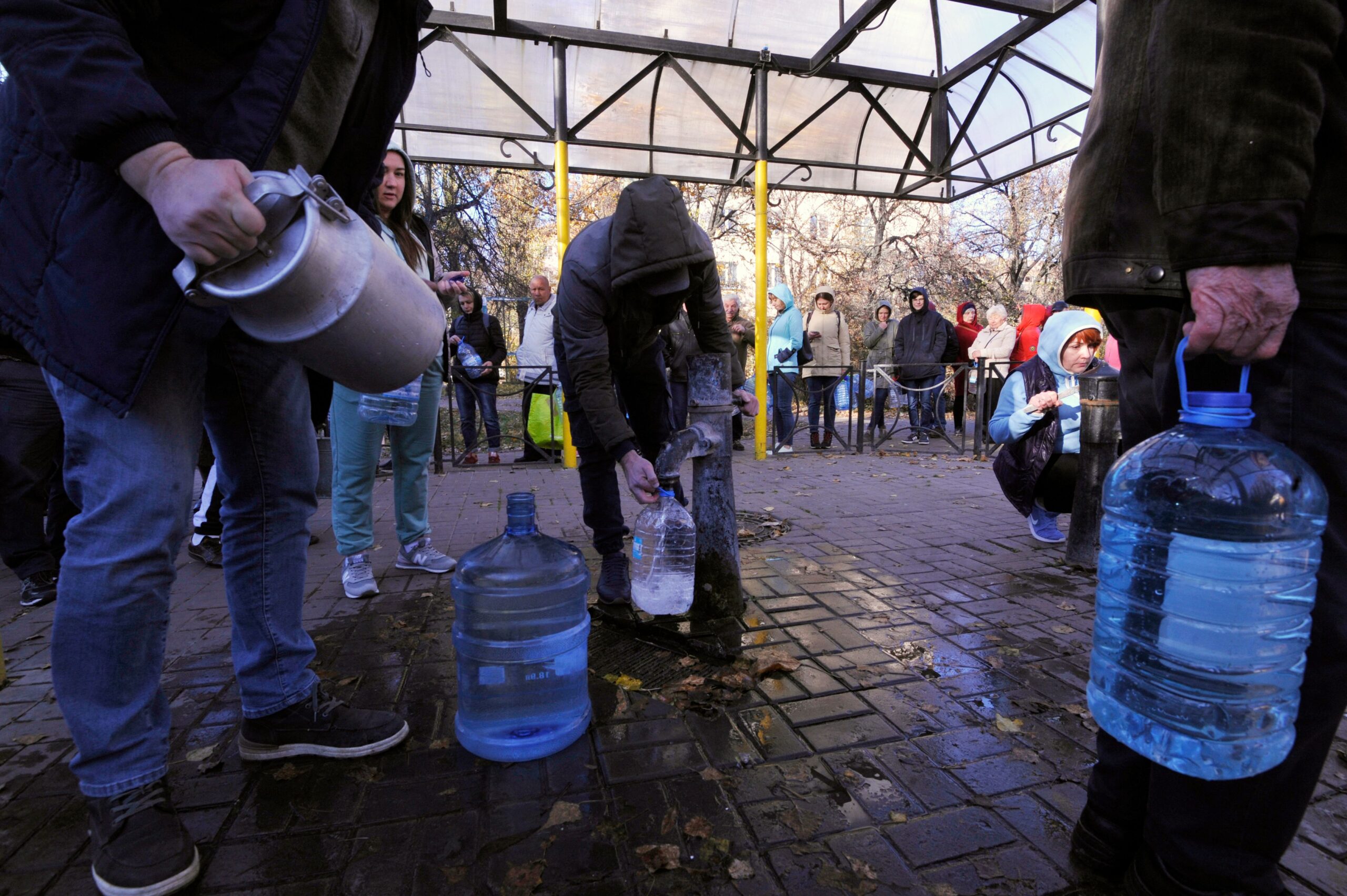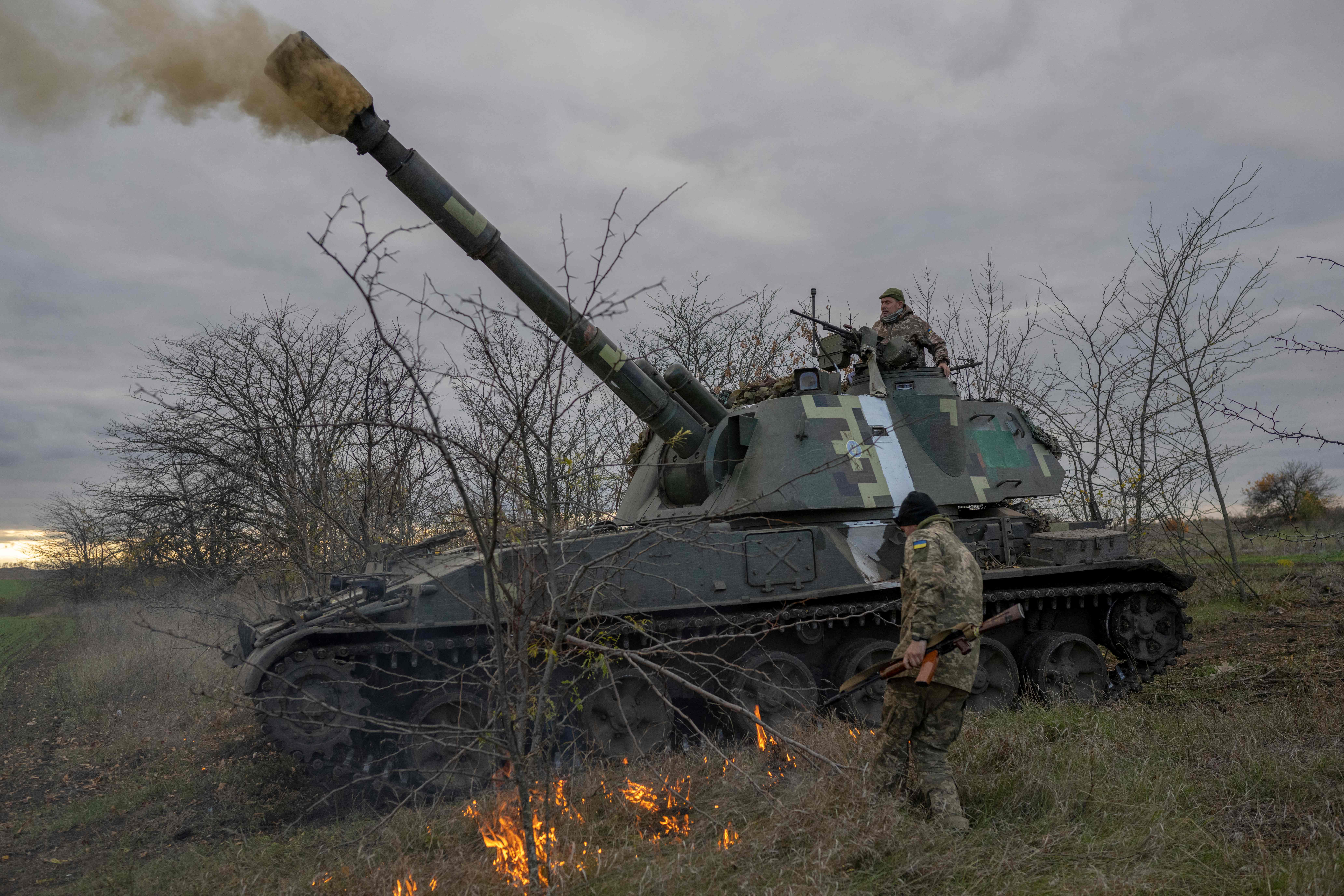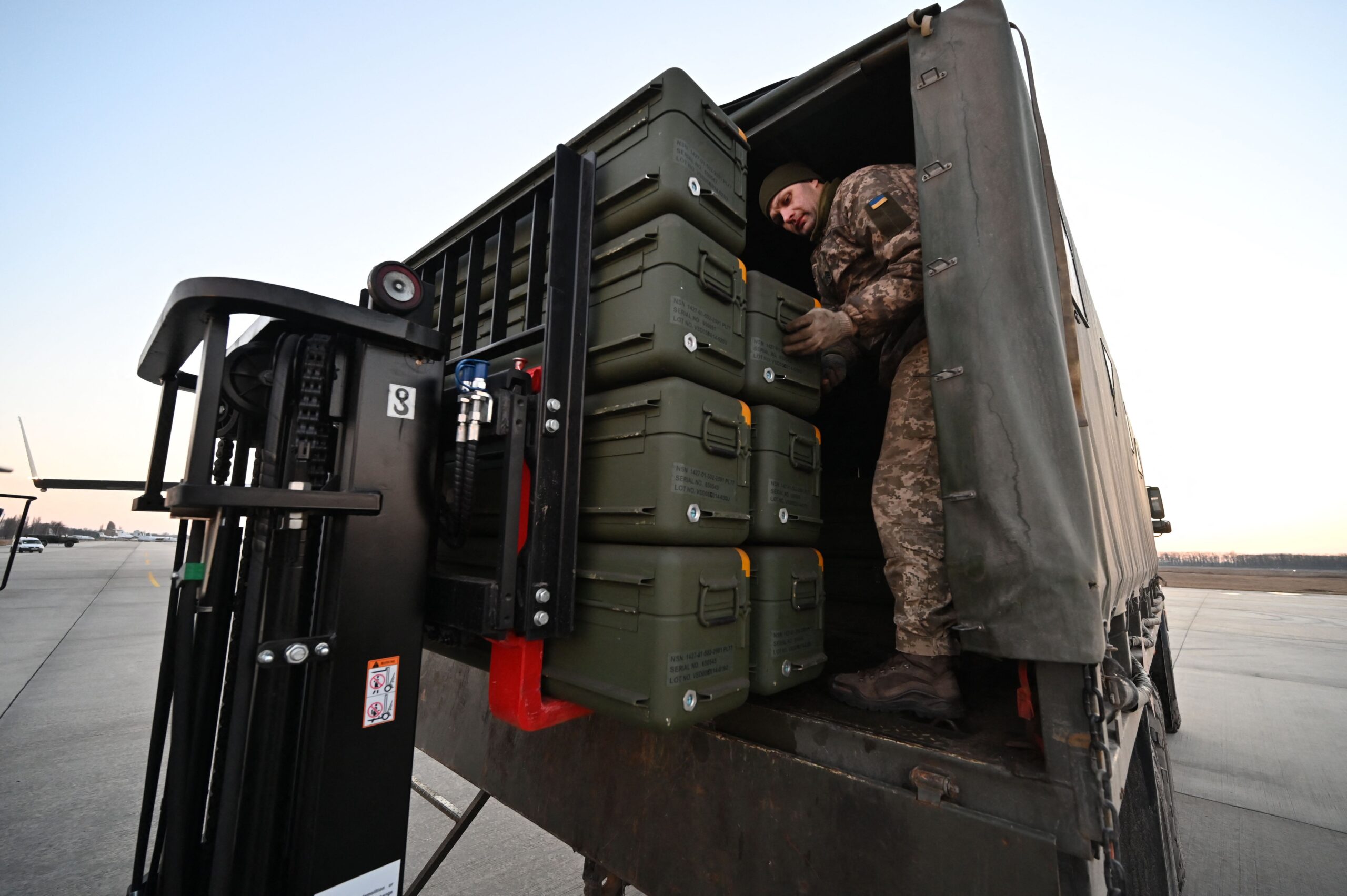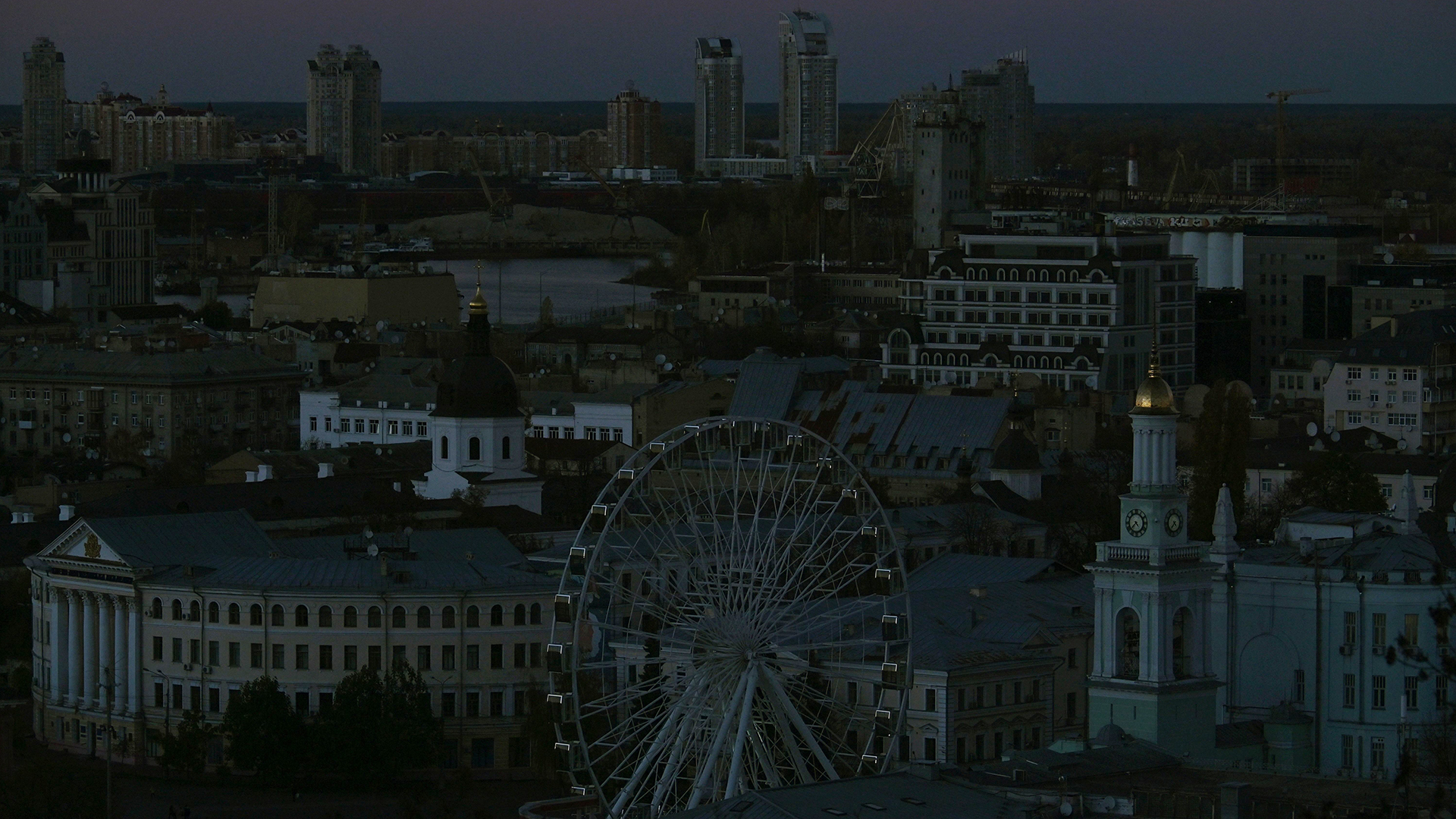Ukrainian officials are scrambling to restore utility services after another wave of Russian attacks Monday.
“At this time, restoration work is still ongoing in those regions where Russian missiles were hit today,” Ukrainian President Volodymyr Zelensky said on his Telegram page Monday night Kyiv time. “We are doing everything possible to restore energy and water suppl[ies]. And we will resume.”

Russian President Vladimir Putin acknowledged the attacks were partially in response to a boat and aerial drone attack on Sevastopol in Russian-occupied Crimea, “and this is not all we can do,” he said, according to the official Russian TASS news agency’s Telegram channel.
Though Zelensky said Ukrainian air defenses downed 45 of 55 cruise missiles fired at Ukraine, the damage was still extensive.
A Russian strike at an energy infrastructure facility near Kyiv Monday “caused water outages for 80% of the households in the city, “ according to the Kyiv Independent, citing the Kyivvodokanal water company.
In addition, “Russian missiles and drones hit 10 Ukrainian regions and damaged 18 buildings, most of which are part of Ukraine’s energy system,” the Kyiv Independent reported, citing Ukrainian Prime Minister Denys Shmyhal.
Outside of Kyiv, power facilities in Kharkiv, Cherkasy Oblast, Zaporizhzhia, Kirovohrad Oblast, Dnipro and Pavlohrad were also hit, the Kyiv Independent reported.
“Today we are continuing to see widespread and brutal Russian attacks targeting Ukraine’s critical infrastructure,” a senior U.S. defense official told reporters, including from The War Zone, Monday. “Ukraine has been able to defend itself against some of these attacks, but damage to the electric grid and water supply are serious concerns directly harming the civilian population”
Despite the damage, Zelensky claimed that Russia’s use of long-range missiles, and especially drones, have been largely unsuccessful.
“We will continue to strengthen our air defense,” he said. “But now, for every 10 hits, terrorists have to spend at least four more missiles. Russia has an even worse record for drones, including those supplied by its Iranian accomplices. And the world sees it. It sees that the former “second army of the world” is no longer even the twenty-second in terms of its effectiveness. And we will do everything to make it into the second hundred. And it will be.”
Ukrainian officials lauded the German-supplied IRIS-T SLM air defense system, something we have written about extensively, including here.
“The IRIS-T air defense system provided by Germany earlier this month worked with 100% success today,” Yuriy Ignat, spokesman for the Ukrainian Air Force said today, adding that more such systems are needed.
At the same time, Ignat noted that many such systems are needed.
“Air defense capabilities continue to be a US priority and we are working actively with partner nations to improve Ukraine’s defenses,” the senior U.S. defense official said Monday.
Today’s attacks didn’t just affect Ukraine. In one of the most vivid instances of the war spilling across borders, officials in neighboring Moldova said a missile shot down by Ukrainian air defenses “fell in the northern end of the town of Naslavcea in the Republic of Moldova, located on the border with Ukraine,” according to the Moldovan government.
“At the moment, there are no registered victims,” the statement added, “but several windows of some houses in Naslavcea were broken.”
Before we head into more of the latest news from Ukraine, The War Zone readers can get caught up with our previous rolling coverage of the war here.
The Latest
The infrastructure strikes came on the same day that Ukraine claims Russia attacked two tugboats pulling barges full of grain in the Black Sea port of Ochakiv. This came as Moscow said they would suspend the grain shipping agreement. You can read our full report on these developments from earlier today here.
Elsewhere on the battlefield, a senior U.S. military official said that in the Kharkiv region, “we assess that Ukrainian forces have liberated some additional villages as they continue to press toward the east, with heavy fighting and artillery strikes in the vicinity of Svatove and Kreminna,” while “Russian forces in this area are focused on reinforcing their defensive lines.”
Near Bakhmut, there were “no major updates to provide. We do continue to see heavy fighting as Russian forces attempt to pursue offensive operations.”
And in the Kherson region, “we continue to see deliberate and calibrated operations by Ukrainian forces as they press Russian forces along the three main axes we’ve previously described. We assess that the Russians in this area continue to reinforce their defensive lines as well.”
On Friday, Ukrainian Maj. Gen. Kyrylo Budanov, head of his nation’s Defense Intelligence directorate, told The War Zone that Kherson City was defended by “the most trained and most capable Russian units” a large share of them “from airborne troops of the Russian Federation, Russian special operation forces and the naval infantry, so the most capable units that Russia has.” You can read about that and much more in our interview here.
The senior U.S. military official on Monday said “I don’t know that we’ve characterized which kind of troops Russia is sending where. Again, broadly speaking, what we see is Russia digging in in that region to defend Kherson City and their outer lines, but again, that’s something we’ll continue to watch closely. “
In its latest assessment, the Institute for the Study of War reported several key takeaways:
- The Russian Ministry of Defense and Russian sources claimed that Russian forces repelled Ukrainian assaults on Pershotravneve, Tabaivka, and Berestove in Kharkiv Oblast.
- Ukrainian sources and geolocated reports indicate that Russian forces destroyed a bridge over the Krasna River in Krasnorichenske, Luhansk Oblast. Russian milbloggers accused Ukrainian forces of destroying the bridge.
- A Russian occupation official stated that Russian forces are preparing to defend Kherson City by engineering defenses in Bilozerka and Chornobaivka. Ukrainian military officials also noted that Russian officials continued to prepare defenses around Kherson City.
- Ukrainian military officials reported that Russian forces are preparing to withdraw artillery units from unspecified areas on the western bank of the Dnipro River to possibly reinforce other directions. Ukrainian military officials also reported that several hundred Rosgvardia servicemen deployed from the Republic of Chechnya to Kalanchak in southwestern Kherson Oblast.
- Russian forces continued to shell Ukrainian positions in Beryslav Raion, Kherson Oblast, and both Ukrainian and Russian sources provided limited information regarding the situation on the Kherson Oblast frontline.

- Russian sources claimed that Russian forces captured Vodyane, Donetsk Oblast, (4 km northwest of Donetsk International Airport) on Oct. 30. The Ukrainian General Staff’s evening report did not report repelling Russian attacks in this area as it usually does, potentially indicating that the Russian claims are accurate.
- Russian sources reported that Russian forces captured Pavlivka, Donetsk Oblast, (2 km southwest of Vuhledar) on Oct. 30. Some Russian sources claim that Russian forces control only half of Pavlivka as of Oct. 30. The Ukrainian General Staff’s evening report did not report repelling Russian attacks in this area as it usually does, potentially indicating that the Russian claims are accurate.
- Mobilized men from the Republic of Komi appealed to Russian authorities with complaints of insufficient military equipment and body armor.
Last week, the State Department released the US plan to counter illicit diversion of certain advanced conventional weapons in Eastern Europe, something we covered here.
The Pentagon “has not seen credible evidence of the diversion of U.S. provided weapons,” the senior U.S. defense official, speaking on condition of anonymity, told reporters, including from The War Zone, Monday. “Instead, we see Ukraine’s frontline units effectively employing security assistance every day on the battlefield. Nonetheless, we are keenly aware of the possible risk of illicit diversion and are proactively taking all available steps to prevent this from happening.”
The senior U.S. defense official also said a small number of U.S. personnel in Ukraine are working to carry out inspections.
The Pentagon “is taking an active role as a key implementer, ensuring accountability of advanced weapons donations is a top priority” even though “our ability to execute normal monitoring procedures remains impacted by security conditions.”

Still, “under these circumstances, we are both working with Ukraine to adapt our processes in country and we’re engaging our allies and partners to strengthen external controls as well,” the official said.
In Ukraine, “DOD conducts enhanced and just monitoring along four lines of effort,” the official said. “First, we make comprehensive records of U.S. weapons donations at our distribution node immediately prior to transfer to Ukraine. Second, once in country, Ukraine logs and tracks Ukraine security assistance from the border logistics hub to the frontline. Ukraine also provides expenditure and damage reports to capture her losses. To support Ukraine ability to report and a current combat environment, we’re also developing new and innovative ways to improve data collection and management, Ukraine continues to provide information.”
“Third, DOD is conducting hands-on training with Ukrainian armed forces on U.S. best practices, so they can provide better data for example from sites close to the front lines that U.S. personnel cannot visit. And then fourth, to verify this data, U.S. personnel have recently resumed on-site inspection to assess weapon stocks in country whenever and wherever the security conditions allow. The return of our defense attache and office of defense cooperation personnel in country has allowed us to resume this critical function.”
The official declined to offer specifics on exactly where those inspections are taking place.
“But I will tell you that in each instance, our team from Kyiv – from the U.S. Embassy – has found the Ukrainians to be very transparent and able to support inspection as we were doing prior to the invasion,” the official said.
It was a bad day for Russian helicopters.
Some were apparently hit on the ground, like the two Ka-52 Alligators, apparently blown up in the Pskov region of Russia, near the border with Latvia.
Meanwhile, an Mi-8 Hip, flying on behalf of Russians, was shot down in Donetsk Oblast.
Mike Yeo offered additional insight into why this helicopter might be of interesting origin.
Overall, it was a bad day for Wagner too.
The Ukrainian Air Force apparently carried out a raid on their positions near Bakhmut.
Though they are making plodding progress in Bakhmut.
Their base turned hotel in Alchevsk was apparently hit by a Guided Multiple Launch Rocket System (GMLRS).
Those munitions have a devastating effect, as you can see in this video below of the aftermath of the 182,000 tungsten fragments peppering a truck.
Meanwhile, far away from the battlefield, the mercenary group apparently opened up a new ‘research center’ in St. Petersburg, Russia.
Riding on the windshield of a swiftly moving vehicle in a war zone is often a bad idea, as this video below demonstrates.
And the Russians are still leaving valuable things behind in their hasty retreats.
Like this T-72B tank, apparently captured near Kupiansk.
But some of what Russia is leaving behind is much, much older.
Like this antique PM1910 heavy machine gun that first saw the light of day before World War I.
But not every “new” piece of equipment Ukraine receives is found on the battlefield.
Officials in Odesa found this Mi-2 Hoplite just sitting around in a shipping crate…since 2007.
Reaching out to world leaders on a constant basis in search of additional arms can’t be easy, as Zelensky found out over the summer when U.S. President Joe Biden apparently snapped at him.
But the two clearly have made up since, as NBC further reported.
We will continue to update this story until we state otherwise.
Contact the author: howard@thewarzone.com
